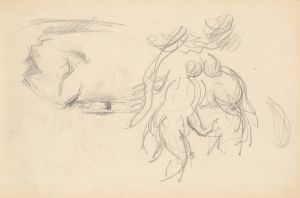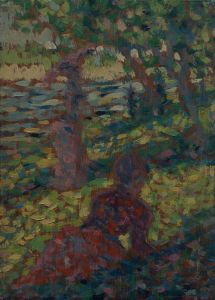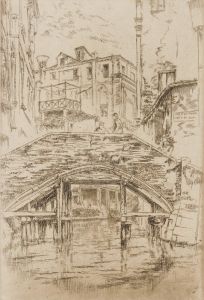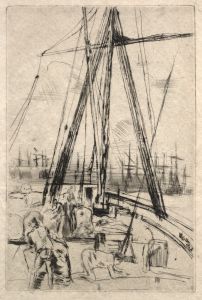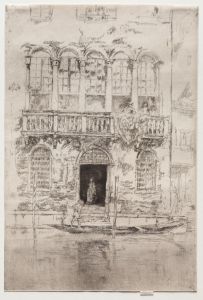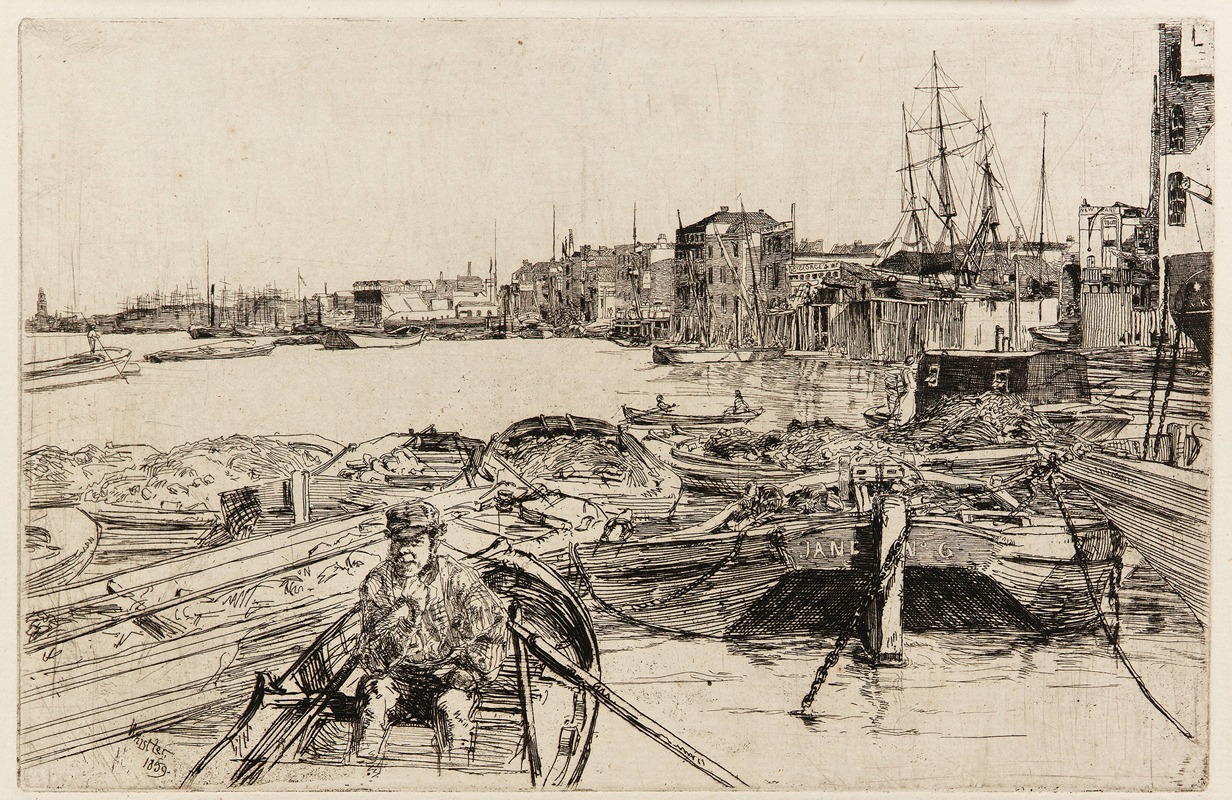
The Pool
A hand-painted replica of James Abbott McNeill Whistler’s masterpiece The Pool, meticulously crafted by professional artists to capture the true essence of the original. Each piece is created with museum-quality canvas and rare mineral pigments, carefully painted by experienced artists with delicate brushstrokes and rich, layered colors to perfectly recreate the texture of the original artwork. Unlike machine-printed reproductions, this hand-painted version brings the painting to life, infused with the artist’s emotions and skill in every stroke. Whether for personal collection or home decoration, it instantly elevates the artistic atmosphere of any space.
"The Pool" is an etching by the American-born artist James Abbott McNeill Whistler, created in 1859. Whistler was a prominent figure in the 19th-century art world, known for his contributions to the Aesthetic Movement and his innovative approach to art, which emphasized harmony and composition over narrative content. "The Pool" is part of Whistler's "Thames Set," a series of etchings that depict various scenes along the River Thames in London.
Whistler moved to London in 1859, and the city, with its bustling river life and atmospheric conditions, became a significant source of inspiration for him. "The Pool" captures a view of the Thames, focusing on the industrial and commercial activities that characterized the river during this period. The etching showcases Whistler's keen eye for detail and his ability to convey the mood and atmosphere of a scene through the medium of etching.
In "The Pool," Whistler depicts a busy section of the Thames, likely near the Pool of London, which was a central hub for shipping and trade. The composition includes various elements typical of the river's landscape at the time, such as ships, warehouses, and cranes. Whistler's use of line and shading in the etching creates a sense of depth and movement, drawing the viewer's eye across the scene. The intricate details of the ships and the architecture along the riverbank highlight Whistler's technical skill and his interest in capturing the essence of urban life.
Whistler's "Thames Set" was instrumental in establishing his reputation as a leading etcher of his time. The series was well-received by critics and collectors, who praised Whistler's ability to transform everyday scenes into works of art through his innovative use of the etching medium. "The Pool," in particular, exemplifies Whistler's approach to art, where the focus is on the aesthetic qualities of the composition rather than a specific narrative or moral message.
The etching reflects Whistler's broader artistic philosophy, which was influenced by the Aesthetic Movement's emphasis on "art for art's sake." This philosophy prioritized beauty and harmony in art, often eschewing traditional subjects and themes in favor of compositions that were pleasing to the eye. Whistler's work, including "The Pool," often drew comparisons to the works of other artists who were part of the Aesthetic Movement, such as Dante Gabriel Rossetti and Edward Burne-Jones.
"The Pool" and the other etchings in the "Thames Set" also demonstrate Whistler's interest in the interplay between light and shadow, a theme that would continue to be central to his work throughout his career. The atmospheric effects achieved in these etchings foreshadow Whistler's later experiments with tonal variation in his paintings, particularly in his famous "Nocturnes" series.
Today, "The Pool" is considered an important example of Whistler's early work and his contribution to the development of etching as a fine art form. The etching is held in various public and private collections, where it continues to be studied and appreciated for its technical mastery and its evocative portrayal of 19th-century London. Whistler's influence on the art world remains significant, and "The Pool" stands as a testament to his skill and vision as an artist.






